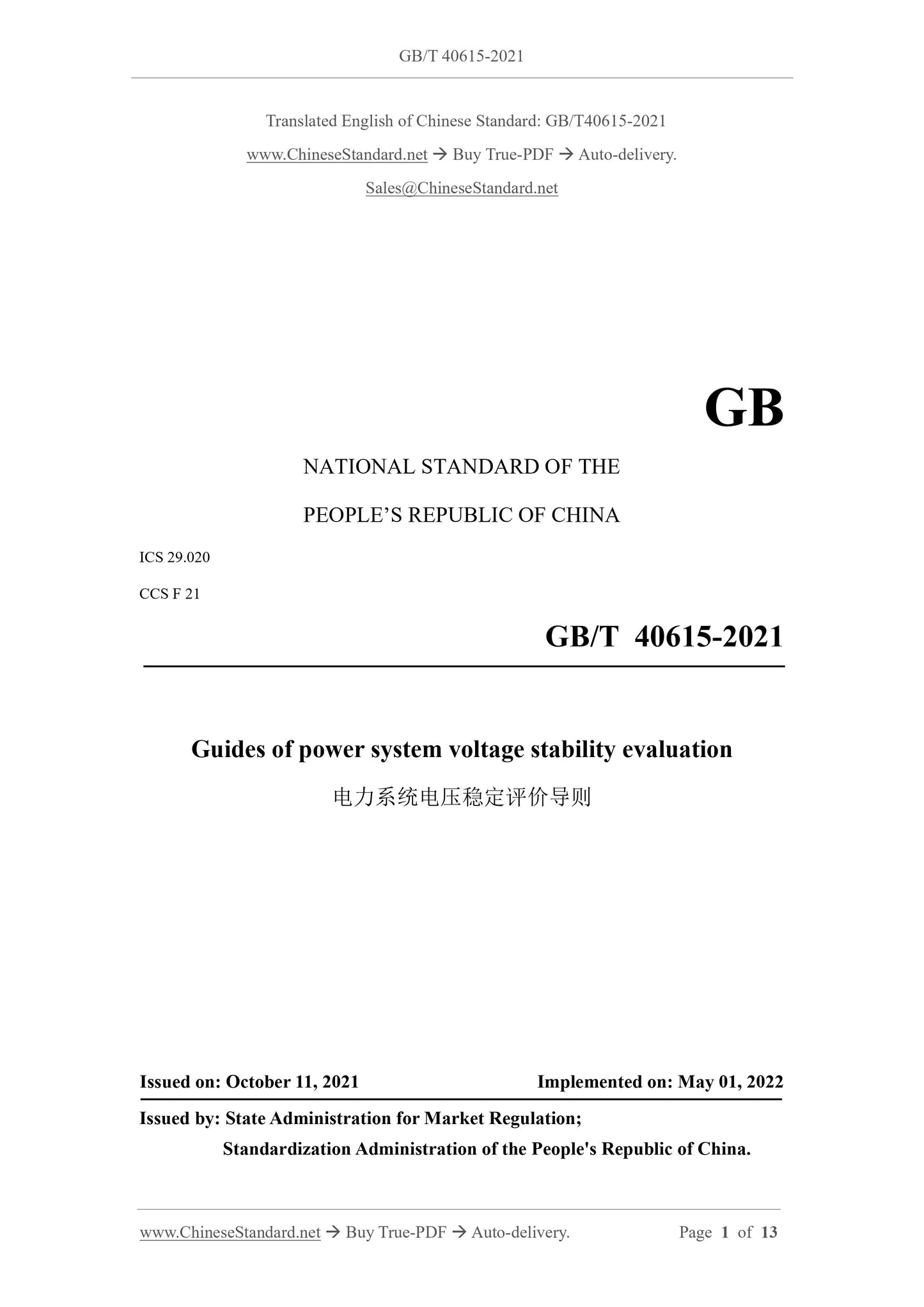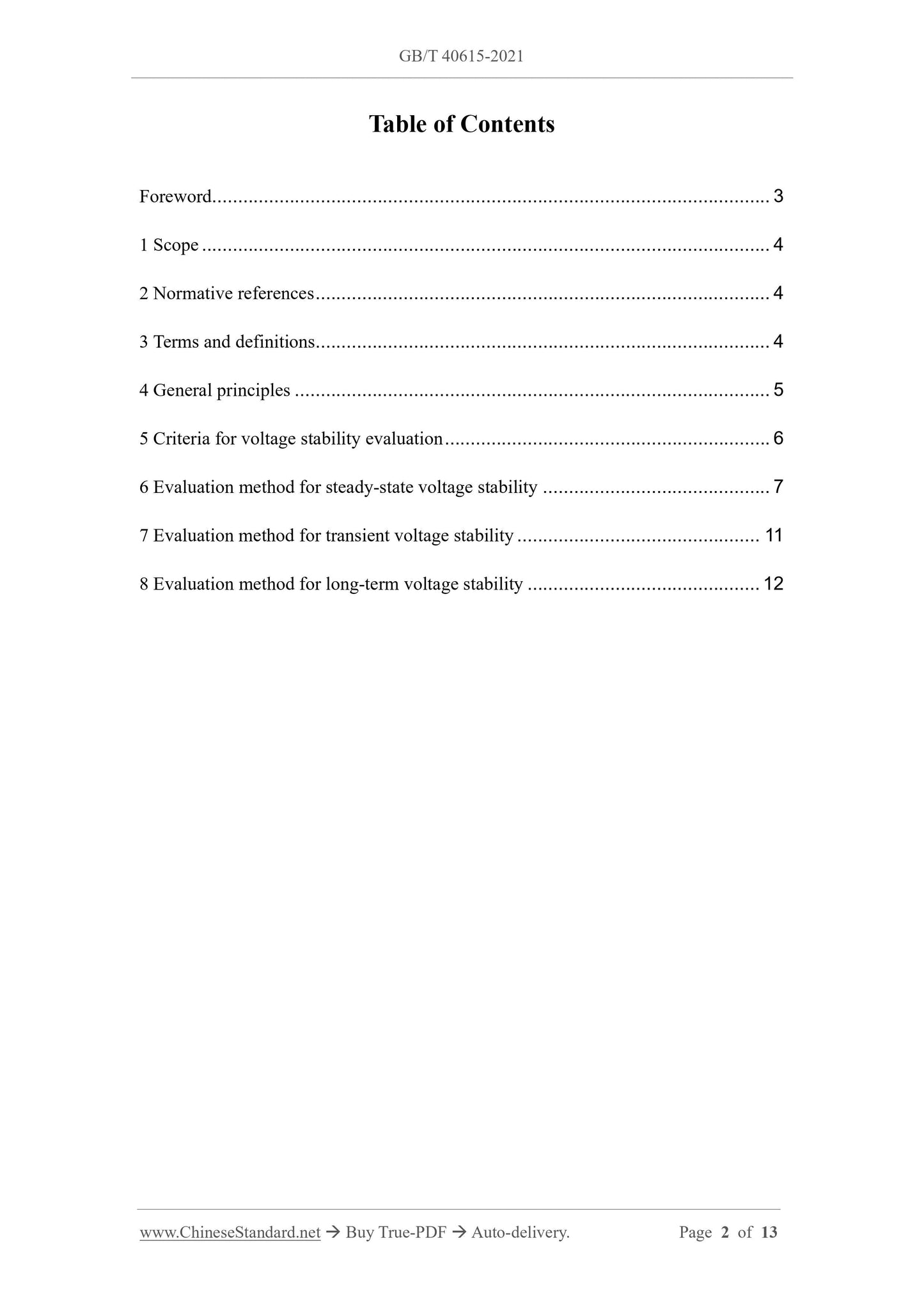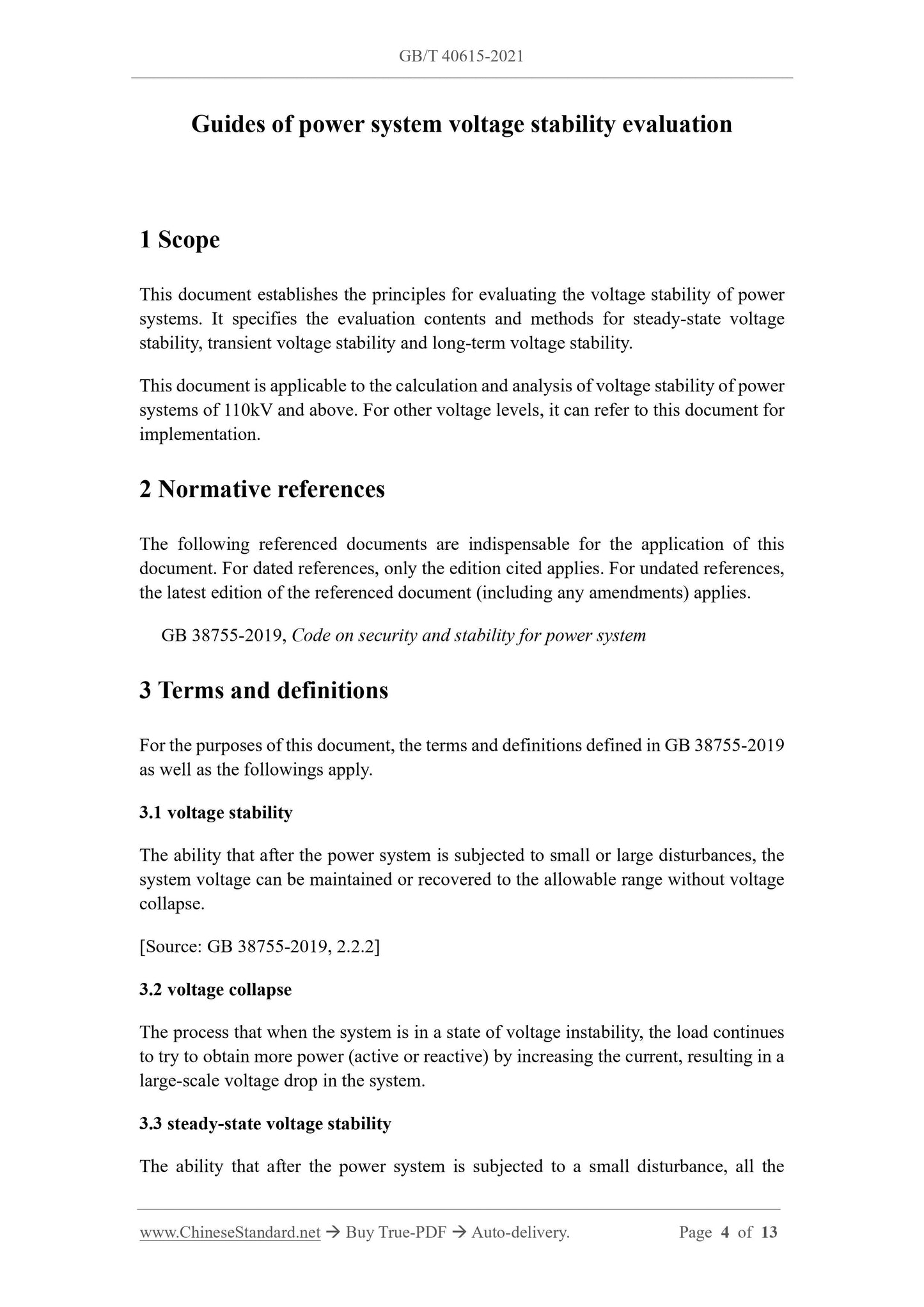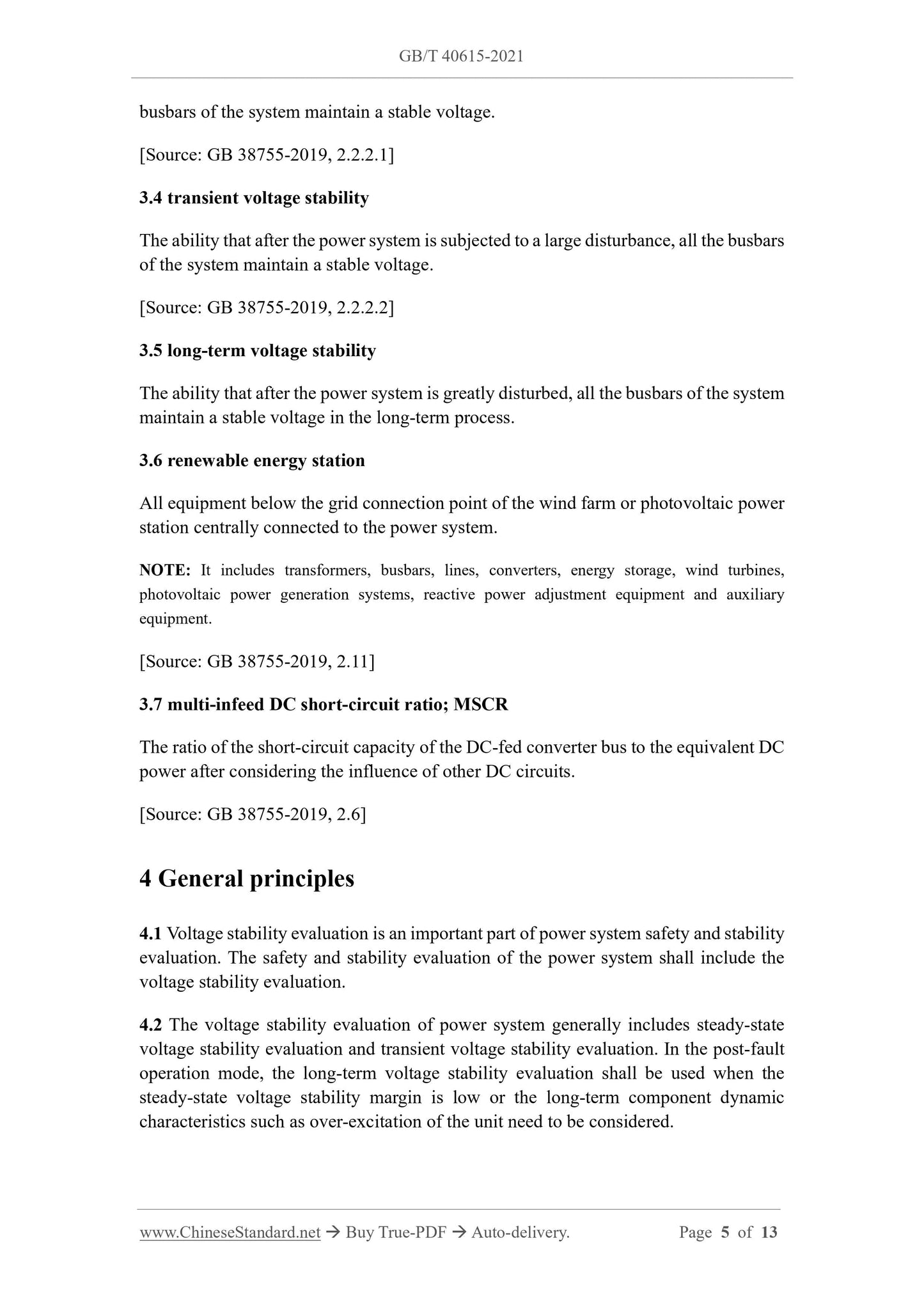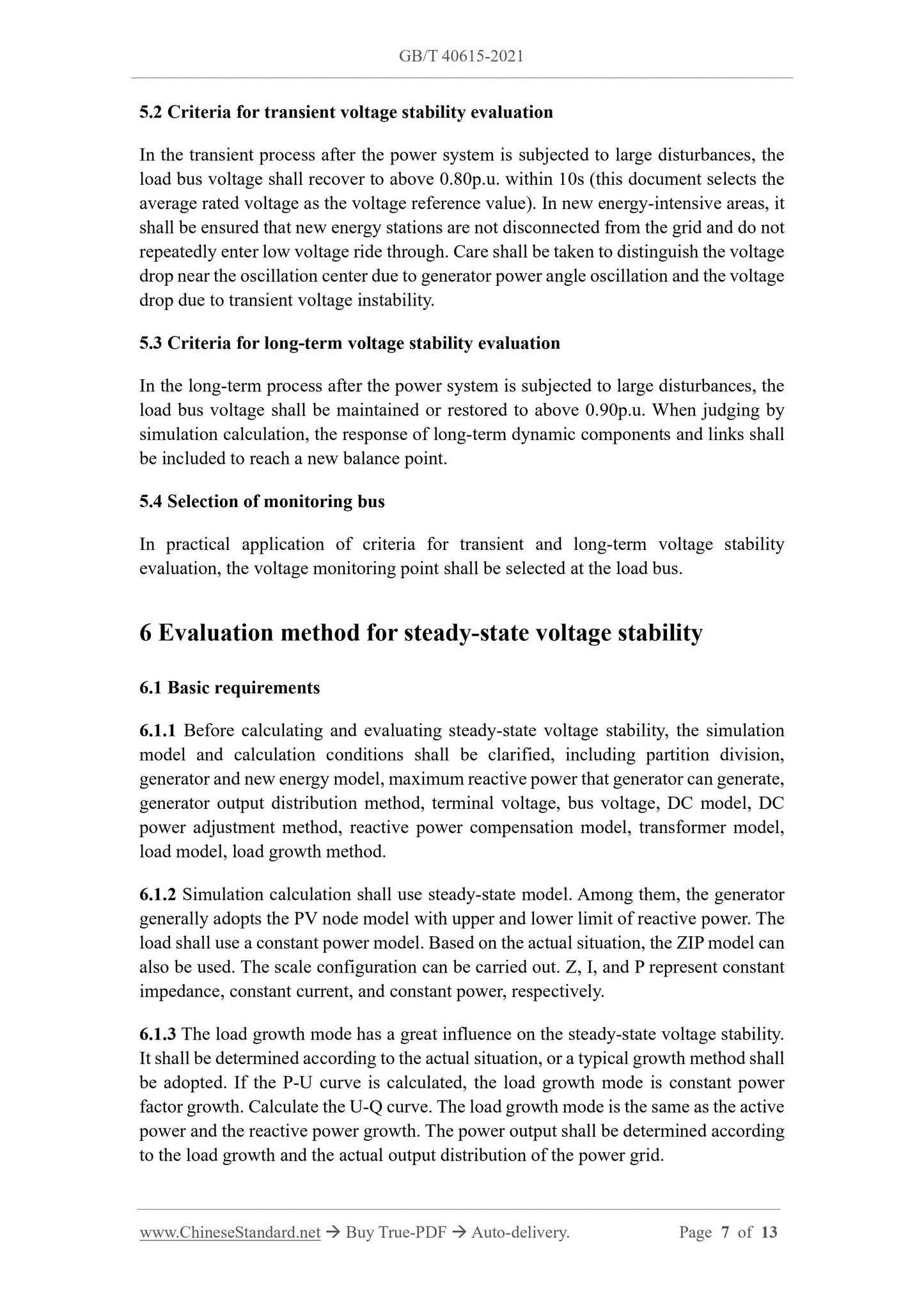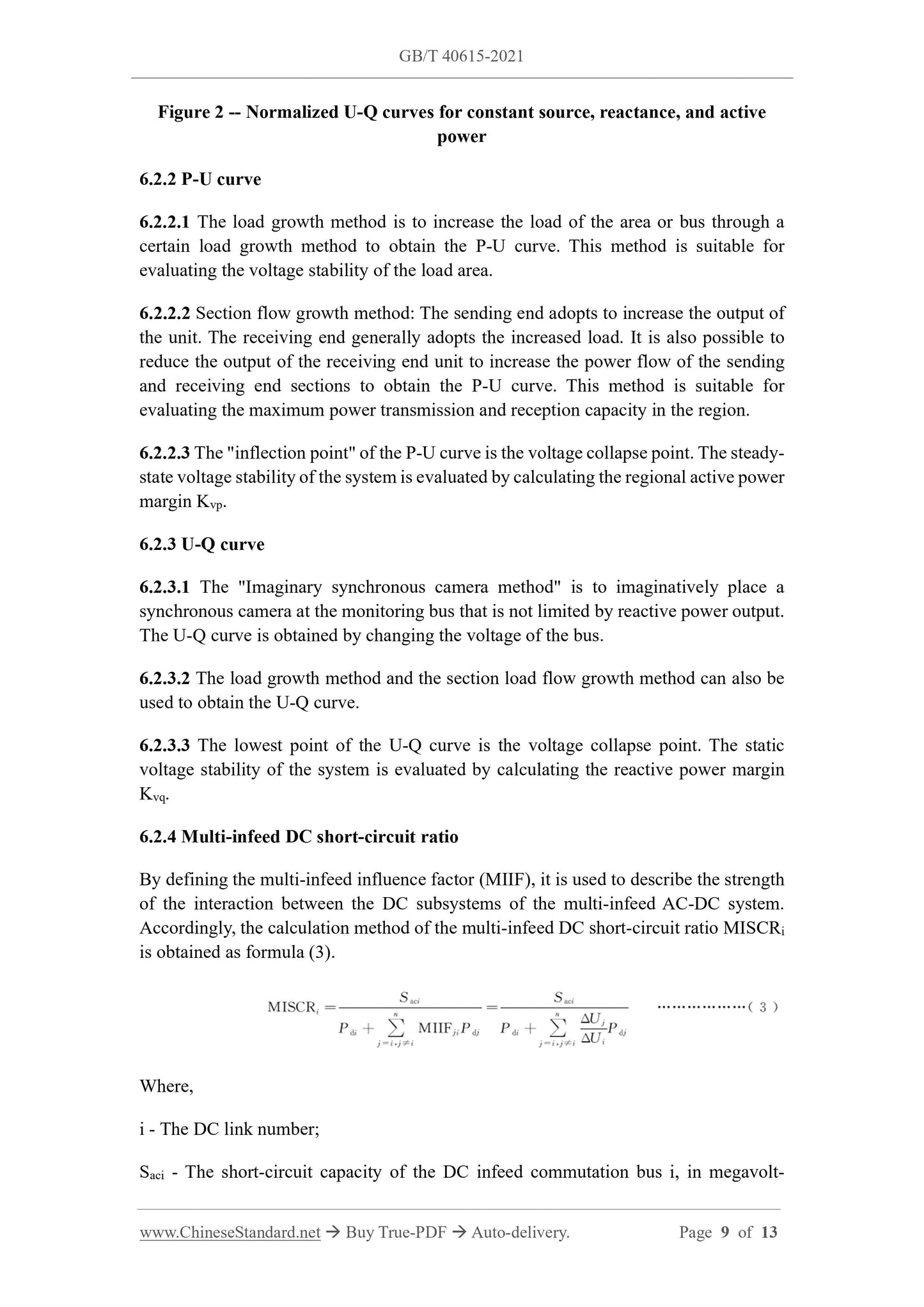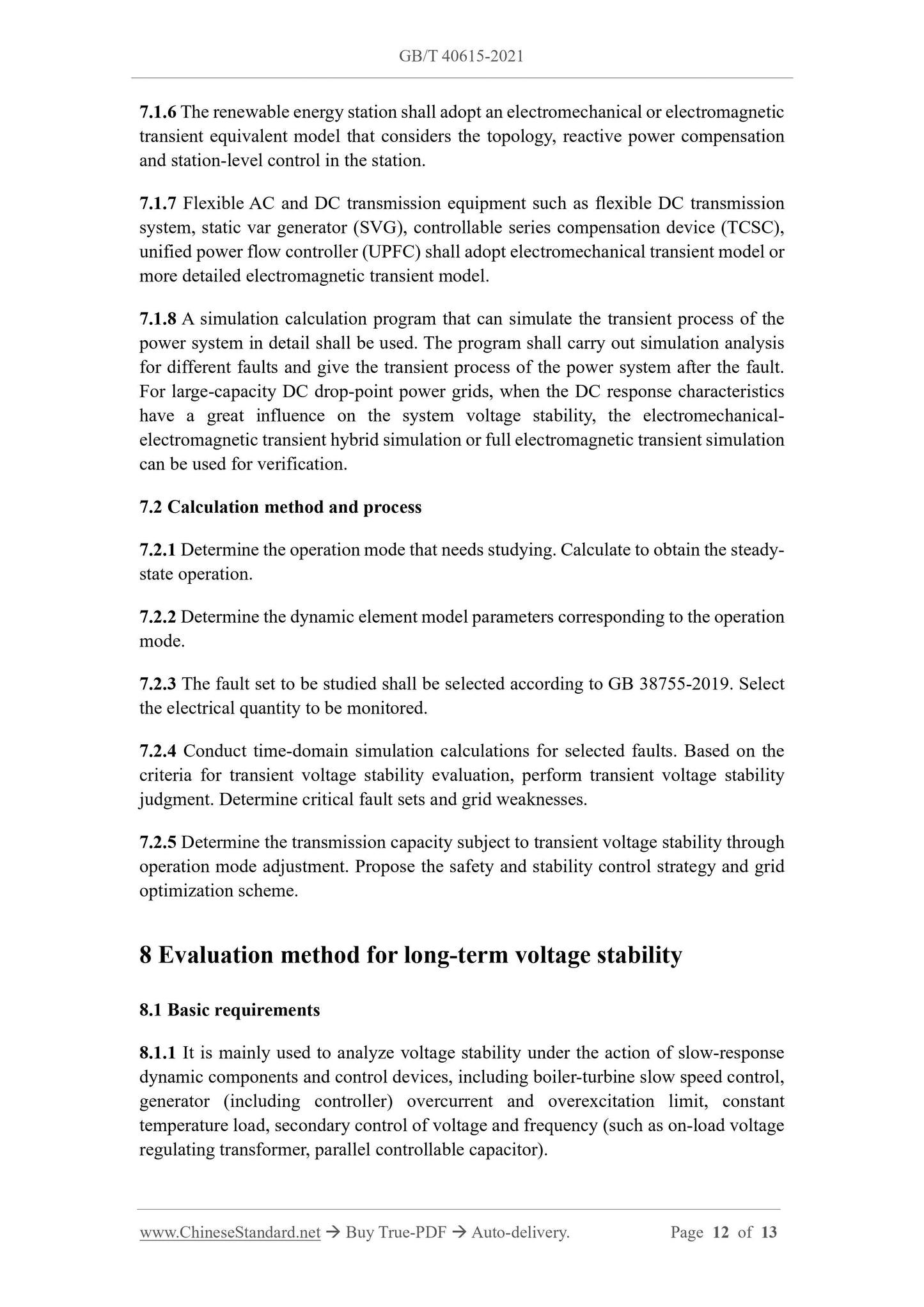1
/
of
7
www.ChineseStandard.us -- Field Test Asia Pte. Ltd.
GB/T 40615-2021 English PDF (GB/T40615-2021)
GB/T 40615-2021 English PDF (GB/T40615-2021)
Regular price
$170.00
Regular price
Sale price
$170.00
Unit price
/
per
Shipping calculated at checkout.
Couldn't load pickup availability
GB/T 40615-2021: Guides of power system voltage stability evaluation
Delivery: 9 seconds. Download (and Email) true-PDF + Invoice.Get Quotation: Click GB/T 40615-2021 (Self-service in 1-minute)
Newer / historical versions: GB/T 40615-2021
Preview True-PDF
Scope
This document establishes the principles for evaluating the voltage stability of powersystems. It specifies the evaluation contents and methods for steady-state voltage
stability, transient voltage stability and long-term voltage stability.
This document is applicable to the calculation and analysis of voltage stability of power
systems of 110kV and above. For other voltage levels, it can refer to this document for
implementation.
Basic Data
| Standard ID | GB/T 40615-2021 (GB/T40615-2021) |
| Description (Translated English) | Guides of power system voltage stability evaluation |
| Sector / Industry | National Standard (Recommended) |
| Classification of Chinese Standard | F21 |
| Word Count Estimation | 10,130 |
| Issuing agency(ies) | State Administration for Market Regulation, China National Standardization Administration |
Share
